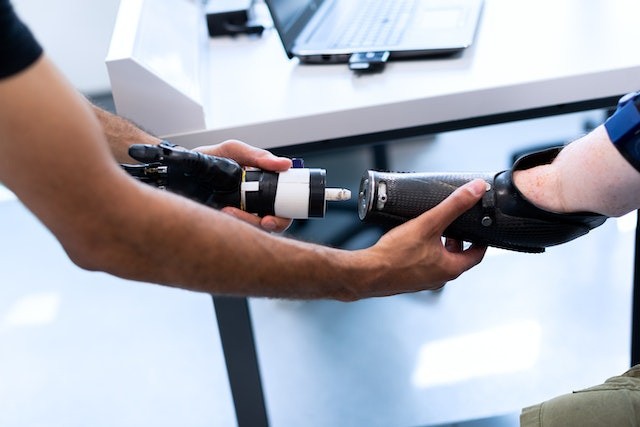
Researchers from Tokyo, Japan, are convinced that we could do more if we had more limbs. Thus, they are working on wearable robotic arms.
Japanese Researchers Working on Robotic 'Jizai' Arms
A real-life Dr. Octopus from the popular superhero flick "Spider-Man" could be our future. Masahiko Inami, a professor at the Research Center for Advanced Science and Technology at the University of Tokyo, is the research director of the JIZAI Body project in ERATO, funded by the Japan Science and Technology Agency (JST). Inami's team at the University of Tokyo has been developing wearable robotic arms, The Japan Times reported.
Inami's team is creating several technologies based on the concept of jizai, a term that loosely translates to autonomy and the right to do as one pleases in Japanese.
The goal is to encourage a connection between musician and instrument that is somewhere between that of a human and that of a tool, much like how a musical instrument can start to seem like an extension of the body.
Inami claims that traditional Japanese puppetry and a short story by author Yasunari Kawabata about a guy who steals a young woman's arm and spends the night with it inspired the Jizai Body Project.
He explained that the extra limb is not designed to be a competitor to humans. Instead, wearable robotic arms is a tool that facilitates our freedom of movement, like an e-bike or bicycle. Inami added that it can foster creativity and support us.
A promotional video for the "Jizai Arms" features two ballet dancers moving in unison with robotic arms that protrude from their backs and torsos. In the end, the dancers embrace with robotic arms.
After some time, some wearers develop attachments to the arms, according to Inami. After using them for a time, they reportedly felt that taking them off was a little depressing. They differ slightly from other tools in that regard, Inami claimed.
However, the potential goes beyond making a novelist's idea a reality and includes things like aiding in search and rescue operations.
In the future, individuals could develop wings on their backs, or drones will be linked to them. Perhaps someone will create a six-arm sport or a novel swimming form, Inami added.
What Is Jizai-Body Project?
The Inami JIZAI-Body Project aims to perform ground-breaking research to create "Jizaika-technology" and examine the "Jizaika-body." The former enables humans to collaborate with machines (including robots and AI) and to live without restrictions while still feeling like they have agency.
The latter examines the neuronal and psychocognitive processes induced by obtaining such a freely transformable body.
AI-Powered Robotic Arm in Feline Utopia
In a previous report from Science Times earlier this year, an AI-powered arm was integrated into an environment with three cats to learn which activities and snacks the trio likes most and tailor its interaction accordingly.
The Blast Theory members created the Cat Royale project as an art installation. Brighton-based Blast Theory is a multi-award-winning artistic collective. In 1991, the group was established.
They create interactive art to investigate social and political issues, putting the general public in the center of peculiar and perhaps uncomfortable encounters to offer fresh viewpoints and widen opportunities for potential change.
Before the trial, Blast Theory urged people to record their cats to train their AI system to recognize the "happiness" of cats.
RELATED ARTICLE: What Caused the Death of the Whale Shark? Research Points to International Trade Carried by Sea as the Culprit
Check out more news and information on Tech & Innovation in Science Times.










